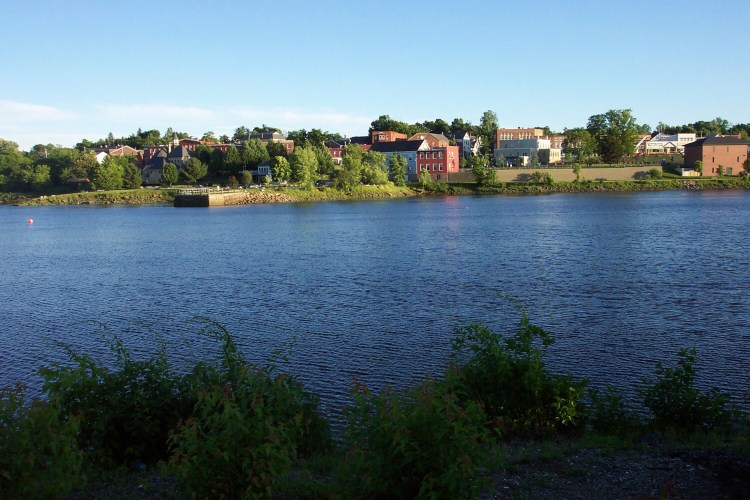July 22, 2010: The only financial backer of a proposed $1 billion liquefied natural gas terminal in the small Canadian-border city of Calais withdraws from the project.

The pullout of investment bank Goldman Sachs and its subsidiary, GS Power Holdings, LLC, was one of many problems that doomed the project.
A group called Calais LNG wanted to build the terminal on about 330 acres along the St. Croix River, featuring a 1,000-foot pier and two or three storage tanks. It also would have had 20 miles of underground pipes connecting to the Maritimes & Northeast Pipeline with the capacity to move 1 billion cubic feet of gas daily.
Critics said the terminal, and LNG tankers in Passamaquoddy Bay and the St. Croix River, would endanger coastal wetlands and the livelihoods of local fishermen.
The U.S. Federal Energy Regulatory Commission dismissed Calais LNG’s application in 2012, leaving only Downeast LNG, one of three organizations originally seeking a terminal, still ostensibly striving toward that goal.
In May 2016, Downeast put its project up for sale. The plan met another obstacle when the Canadian government prohibited LNG tankers from using Head Harbor Passage, the only route ships of that size could use to enter Passamaquoddy Bay.
Finally, in August 2016, the U.S. Federal Energy Regulatory Commission dismissed an application from Downeast to build an LNG terminal in Robbinston, which is near Calais and across the mouth of the St. Croix River from St. Andrews, New Brunswick.
In a statement about its decision, FERC said, “There has been essentially no progress at all toward completion of an application in the past nine months, and Downeast has presented nothing to persuade us that its situation is likely to change in the immediate future.”
July 22, 2013: A jackhammer-equipped backhoe pounds its way through the 10-year-old Veazie Dam, which is being demolished as part of a river restoration project.
The dam was built on the Penobscot River to generate hydroelectric power.

In this 2015 photograph, the Penobscot River flows through the area where the Veazie Dam once stood. The dam, along with the Great Works Dam farther downstream, was removed in an effort to allow salmon easier passage to spawning grounds upriver from the dam. Gregory Rec/Staff Photographer
As they could before the dam was built, migrating fish were then able to swim upstream past the dam site.
In 2012, the Great Works Dam was removed 7.3 miles upriver from the Veazie Dam. The first river obstacle fish met when the Veazie Dam was gone was the Milford Dam, until a work crew built a modern fish ladder there.
The $62 million restoration project gave fish direct access to the Piscataquis, Mattawamkeag and Pleasant rivers, and the East Branch of the Penobscot River.
The Penobscot River project is considered a model for others because it is based on a cooperative agreement among environmental groups, federal agencies, an Indian tribe and a power company.
Presented by:

Joseph Owen is an author, retired newspaper editor and board member of the Kennebec Historical Society. Owen’s book, “This Day in Maine,” can be ordered at islandportpress.com. To get a signed copy use promo code signedbyjoe at checkout. Joe can be contacted at: jowen@mainetoday.com.
Send questions/comments to the editors.



Comments are no longer available on this story